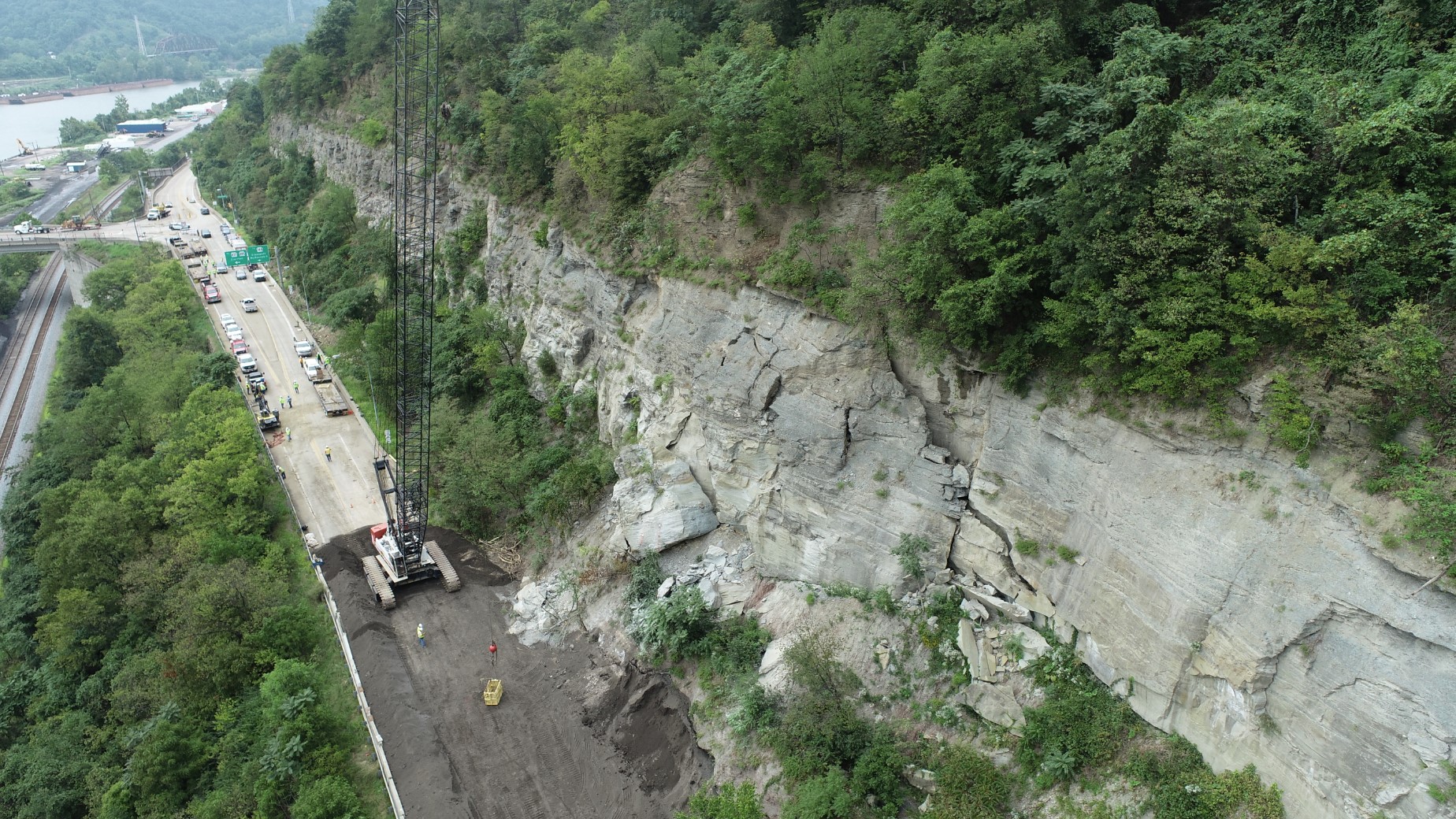Experts From Across the Nation Share Their UAS Challenges and Successes
The emerging technology of unmanned aerial systems (UAS) is opening the door to more efficient and safer ways government transportation and other agencies can address construction, design, maintenance and emergency response issues, panels of experts outlined at a three-day virtual workshop hosted by PennDOT and the Federal Highway Administration (FHWA).
Representatives from transportation departments from California, Alaska, Utah, Alabama, Ohio, Pennsylvania as well as those from Penn State, Colorado State, and Texas A&M universities, FHWA, the Federal Aviation Administration (FAA) and consultants shared their insights during the sessions.
"We are excited about this technology," FHWA Division Administrator Alicia Nolan, told participants in the opening session. "We are so happy Pennsylvania decided to embrace this technology." She noted that the State Transportation Innovation Council (STIC) embraced and leveraged funds to promote UAS. PennDOT Executive Deputy Secretary Melissa Batula, P.E., said that PennDOT formed a UAS steering committee in July 2019. The department, now with 17 UAS units, commonly referred to as drones, is applying the technology for surveys, bridge inspections and incident management.
Ryan Marlow, UAS program coordinator for the Alaska Department of Transportation and Public Facilities, said the tremendous size of the state and the often harsh environment it must contend with offers challenges. They have adopted improved measures to extend battery life in cold weather. The department has 43 UAS units, 43 certified pilots and has seen 60 percent growth in its program. He said the department estimates the use of UAS devices saved on average $7,000 each day.
Among the innovative UAS missions his agency has undertaken, he said, were verifying mitigation efforts to deal with rock slides, mapping snow depth to deal with avalanches and dealing with the impacts of earthquakes and river erosion.
The agency has also generated good community relations by sharing its images immediately with the news and social media.
"We are very open with everything we captured," he said.
David Gallagher who manages Ohio DOT's UAS program, added that his agency has used the aerial vehicles to help with roller coaster inspections, thermal mapping of traffic congestion in an area with multiple schools, bridge deck lamination, potential rockslide areas and abandoned oil wells.
Paul Wheeler, director of aerial innovation with consultant firm WSP, noted that many states are reporting significant cost savings with UAS deployments. He said Minnesota has reported 40 percent savings on bridge inspections, Utah has reported 50 percent savings on land surveying, and Colorado 40 percent on rock fall hazard mapping.
Among the key components of successful UAS programs, he said, are executive support, identification of costs and benefits, extensive program structure, good data management, comprehensive pilot training and a dedicated funding source. He urged that entities establishing UAS programs start with adopting good policies and procedures and naming a program manager and training coordinator. Also, important, he said, is an effective public relations program that sends out positive messages about UAS use and savings to the public.
The workshop sessions featured in-depth, technical discussions by David May of the FAA UAS Integration Office, Safety and Operations Branch, and Yanlin Guo, an assistant professor at Colorado State University.
May reviewed FAA's evolving regulatory plans to ensure safe UAS operation, especially in areas near airports. One new coming rule will require UAS's to provide identification and location data that others can detect. Other rules cover pilot training and lighting requirements.
Guo reviewed details of adjusting images taken by UAS vehicles to pinpoint such features as cracks in structures.
PennDOT representatives reviewed the agency's ongoing and developing UAS program.
"We started out taking baby steps, and we are now moving more quickly," said Cheryl Moon-Sirianni, P.E., PennDOT's District 11 Executive in the Pittsburgh region.
With her district's typography of hills and rivers, UAS deployment has become "really important and very useful," she said. Her district uses its four UAS vehicles for monitoring stockpile quantities, slide response mitigation, bridge inspections and construction monitoring.
 Mark Kopko, PennDOT's director of the Office of Transformational Technology, said that Gov. Tom Wolf has set an overall goal of "positioning Pennsylvania as a place to safely test and deploy UAS technology. The Governor's Office wants Pennsylvania to be in the forefront (of UAS)."
Mark Kopko, PennDOT's director of the Office of Transformational Technology, said that Gov. Tom Wolf has set an overall goal of "positioning Pennsylvania as a place to safely test and deploy UAS technology. The Governor's Office wants Pennsylvania to be in the forefront (of UAS)."
He added that he and his team are working on a multi-year strategic plan, based on a vision of "safe and strategic integration of UAS technology into the Pennsylvania transportation system" and a mission of "identifying and recommending potential strategies to safely foster and cultivate UAS technology in Pennsylvania."
Glenn Stout, UAS program manager with Advanced Infrastructure Design Inc. and formerly with New Jersey DOT, reviewed that agency's use of drones for inspecting high mast lighting. He described the coordination the agency did with the FAA to allow UAS flights within the airspace of Newark International Airport to inspect five of the lights near runways. He noted that building a relationship with the FAA and understanding their strong safety culture are some keys to success.
Among the advantages, he said, were less impact on traffic by not having to close lanes for bucket trucks and higher quality inspection images from the UAS cameras. More inspections can be done more quickly and with significant cost savings, he said.